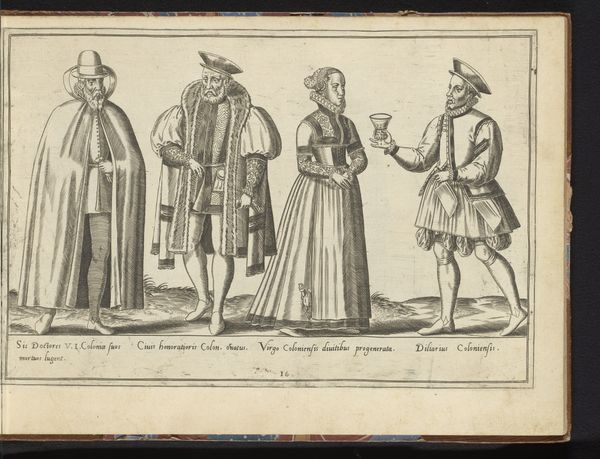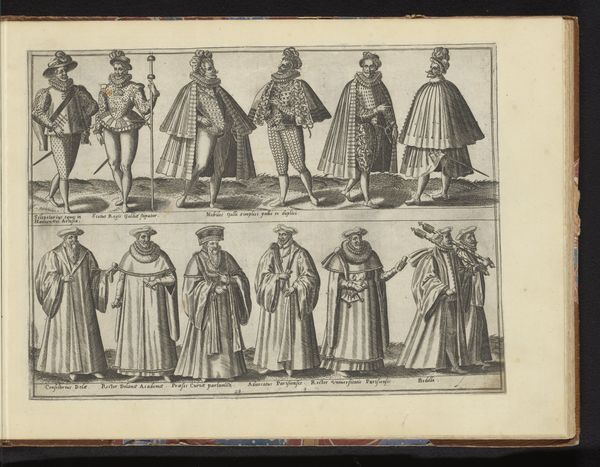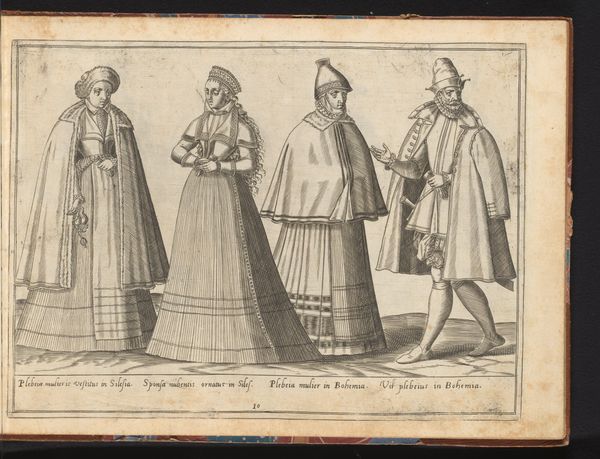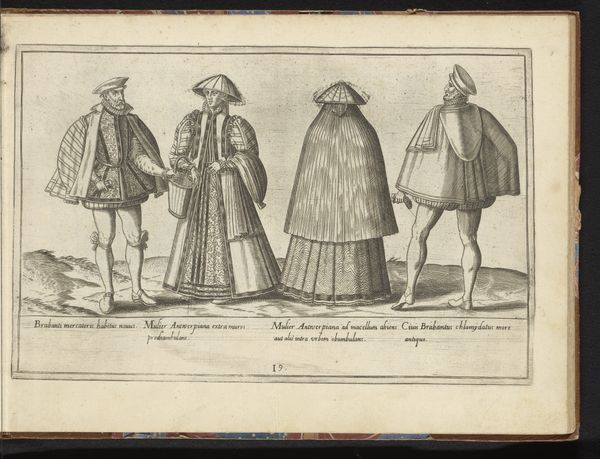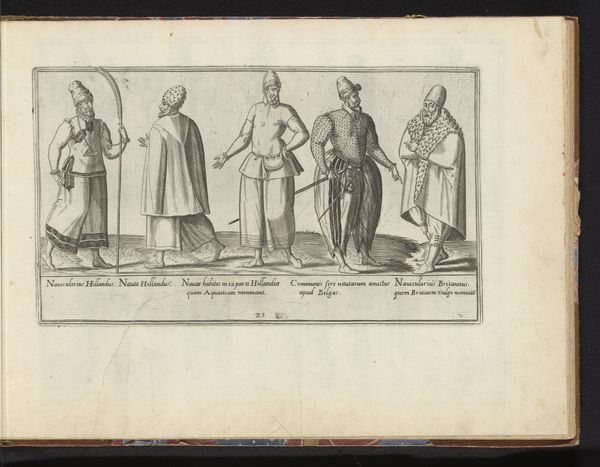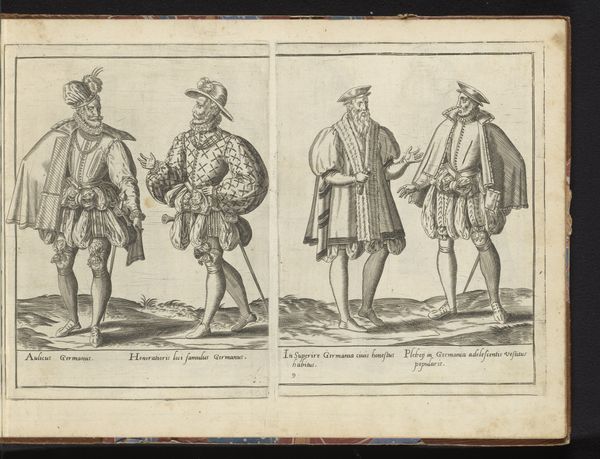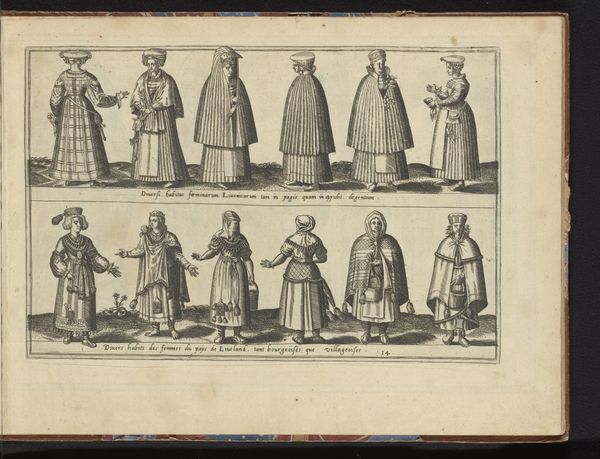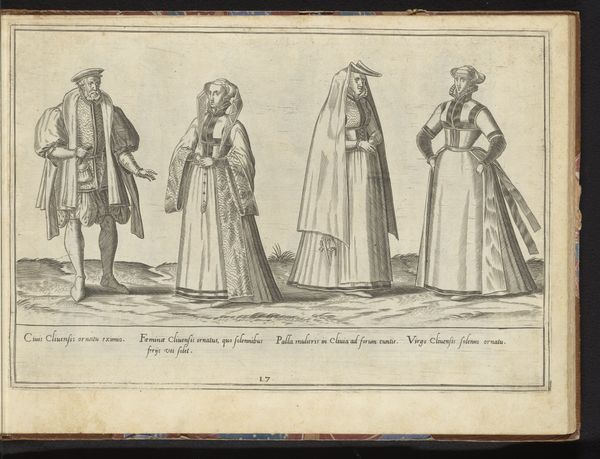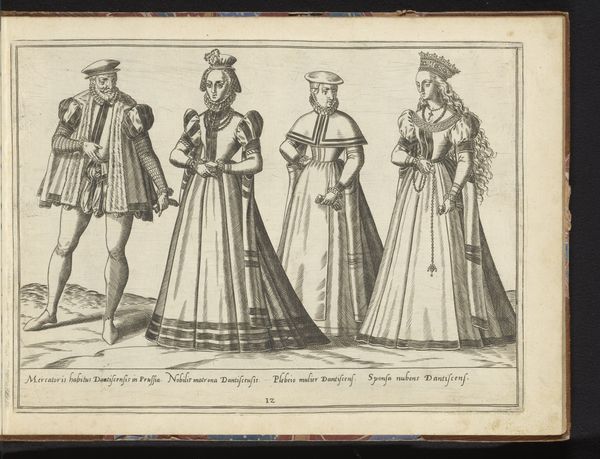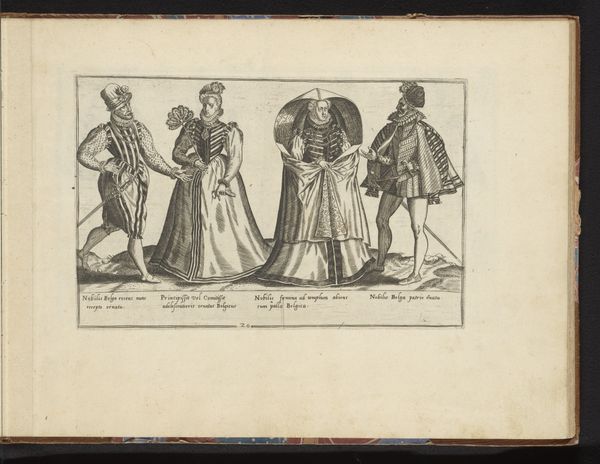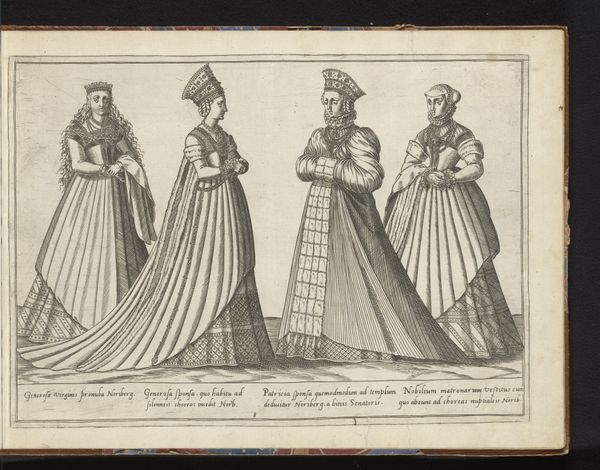
Vier landlieden, gekleed volgens de Italiaanse mode van ca. 1580 before 1581
0:00
0:00
abrahamdebruyn
Rijksmuseum
print, engraving
#
portrait
# print
#
figuration
#
coloured pencil
#
group-portraits
#
sketchbook drawing
#
genre-painting
#
northern-renaissance
#
engraving
Dimensions: height 265 mm, width 360 mm
Copyright: Rijks Museum: Open Domain
Curator: This print by Abraham de Bruyn, dating from before 1581, is titled "Four Country People Dressed in the Italian Fashion of circa 1580." It resides here at the Rijksmuseum. What are your first thoughts? Editor: They look like they’re straight out of a play! So stiff, self-conscious even. I mean, fabulous outfits, don't get me wrong, but there's this peculiar, almost theatrical, distance between them and us. They seem caught in a moment. Curator: The artist uses engraving to delineate each figure meticulously. Observe the clear outlines and precise details of the clothing, allowing us to study the sartorial codes of the era. Each stands independent of the other; notice that the space between them seems intentional, creating distinct formal arrangements. Editor: You are right. They're more like meticulously labeled specimens. Each crease, each fold tells a story—though I’m not sure what it is, precisely! The artist certainly had an eye for fabric; I mean, look at the way light seems to catch on the puffed sleeves! And those hats! Utterly divine. Curator: It seems De Bruyn deliberately avoids imbuing any anecdotal warmth within the image, as if prioritizing details of garments over emotions or expressions. Through the figures’ constructed symmetry we see clear markers of status. The formal composition suggests we’re dealing with types, or rather models, of regional identities and cultural fashion. Editor: Models is the right word! Perhaps like early fashion plates. There’s something appealing in the strangeness of their almost cartoonish presentation; that hyper-clarity almost transforms into something else. Like looking at historical emojis! It strikes me also, these faces and figures reflect an idea of place – something perhaps truer to concept rather than actuality. Curator: It is a striking observation. The artist sought less to capture lived reality, but perhaps a semiotic field: signifiers of the rustic experience. Editor: A semiotic field – yes! Still, one can't help wonder about the real lives behind those severe stares and elaborate costumes. But maybe, that's not the point. Perhaps this print is an invitation, even if unconsciously, for us to see beyond the lines. Curator: A fitting reflection on a fascinating piece that highlights how cultural identities can be formed, viewed, and conveyed. Editor: Indeed. De Bruyn has opened up, even after all this time, many avenues for reflection and, not a little, personal projection.
Comments
No comments
Be the first to comment and join the conversation on the ultimate creative platform.
